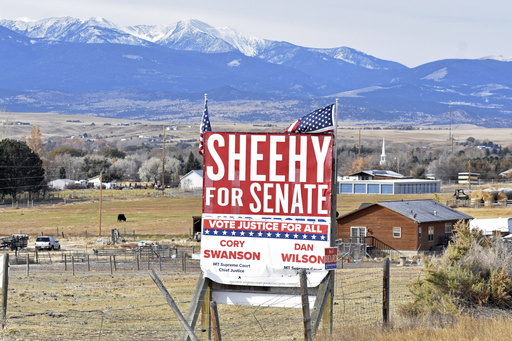
BILLINGS, Mont. — The recent U.S. Senate race in Montana marked a significant milestone for the state, as Democrats faced a major setback with Tim Sheehy’s triumph over three-term Democratic Senator Jon Tester. This outcome not only secured a Republican majority in the Senate but also underscored a substantial cultural shift in Montana, a state that has historically valued local candidates over party allegiance.
This election is notable as it represents the first time in nearly a century that one party has exercised complete control over Montana’s political landscape. The state’s political history includes a legacy of powerful corporate interests, particularly during the era of the Copper Kings, but this has been replaced by a more intense partisanship that the GOP successfully leveraged during the recent election.
Tester, a moderate from a farming background in Big Sandy, was up against Sheehy, a prosperous aerospace businessman and supportive ally of President Donald Trump, who relocated to Montana a decade ago. Sheehy’s victory exemplified how the political climate in Montana has transformed over the last 10 to 15 years, as noted by history professor Jeff Wiltse from the University of Montana. The once prevalent mentality of prioritizing local candidates over outsiders has diminished considerably.
The changing face of Montana politics mirrors larger trends that started gaining traction over a decade ago and intensified amid the pandemic. Traditional job markets in industries like mining and logging, previously strongholds for Democratic voters, have dwindled. In contrast, the state saw an influx of nearly 52,000 new residents since 2020, almost matching the entire addition of residents during the last decade. This demographic shift has redirected political focus from local issues toward broader national themes such as immigration and gender identity.
The 2024 Senate campaign was fueled by an unprecedented influx of external funding, exceeding $315 million, much of which stemmed from unclear groups with wealthy backers. This influx of cash effectively undermined Montana’s long-standing efforts to curb corporate financial influence in politics.
Sheehy’s success is a continuation of a trend that has seen a wave of affluent Republicans rise to power, including Governor Greg Gianforte, U.S. Senator Steve Daines, and U.S. Representative-elect Troy Downing. Daines stands out as the only one from Montana, challenging the historical norm that required deep local roots for high office candidacies.
The stark contrast between the traditional and contemporary political atmospheres in Montana was evident on election night. Tester’s event at a modest Best Western in Great Falls featured a low-key gathering with supporters, where the senator casually enjoyed apple-flavored whiskey. In comparison, Sheehy celebrated his victory at an upscale hotel in Bozeman, marked by luxury and a vibrant atmosphere, reflecting the economic transformations occurring in various regions of Montana.
Having served as a former Navy SEAL, Sheehy founded Bridger Aerospace, which specializes in aerial firefighting and relies on government contracts. During his campaign, he portrayed himself as a pioneer seeking opportunity in Montana, a narrative that resonates with many newcomers.
Despite garnering 22,000 more votes than in his previous election, Tester’s efforts were eclipsed by Sheehy’s broad appeal, culminating in an eight-point victory that signified the end of Democratic hold over statewide offices in Montana.
Republicans have now solidified their dominance in several states, stretching from the Northern Plains to the Rocky Mountains. Montana Republican Party Chairman Don Kaltschmidt remarked on the consolidation of power across the red states.
Democrats like Tester have expressed concern over the new wealth transforming Montana, particularly in affluent areas where housing struggles continue for service workers. Tranel, a Democratic candidate who faced defeat, draws unfavorable comparisons between current conditions and the historical grip of the Copper Kings on local governance, highlighting the ongoing waves of change and complexity in political representation.
The addition of a second House seat in Montana following population growth in 2022 provided a temporary boost to Democratic representation. However, despite the hopes for recovery, recent losses have forced introspection among party members about their relevance to an increasingly conservative electorate.
Republican sentiment has welcomed newcomers who align with conservative beliefs. Cases like Steve Kelly, who relocated from a liberal Nevada, exemplify the trend of individuals seeking less liberal environments. Kelly, now involved in local politics, emphasizes that many of his peers share a similar journey as “conservative refugees” seeking a fresh start.
The demographic shift is increasingly driven by transplants from areas dominated by Democratic policies, particularly from California, which supplies over 85,000 of Montana’s residents. As nearly half of Montana’s population consists of individuals born outside the state, there is a growing divide between stagnant worker wages and rising income from investments, showing how the political landscape is reshaped by these economic changes.
The evolving dynamics in Montana’s political scene illustrate a broader narrative of transformation driven by external influences and shifting demographics, raising questions about the future identity of the state and its political affiliations.

